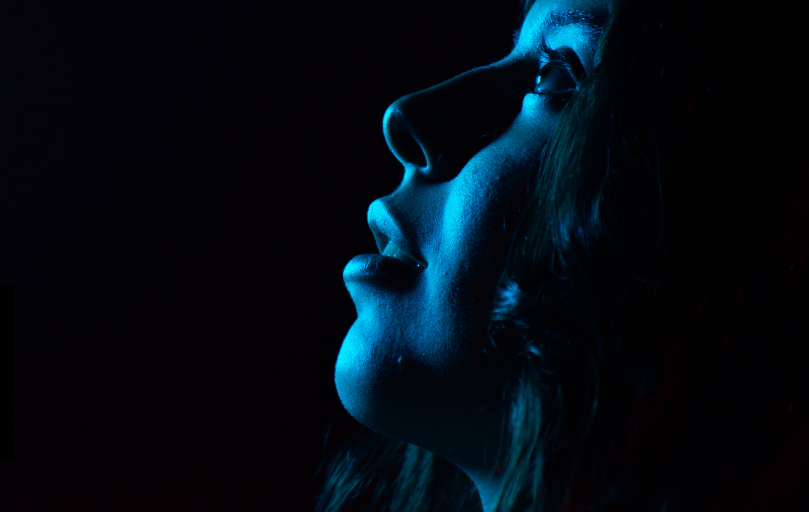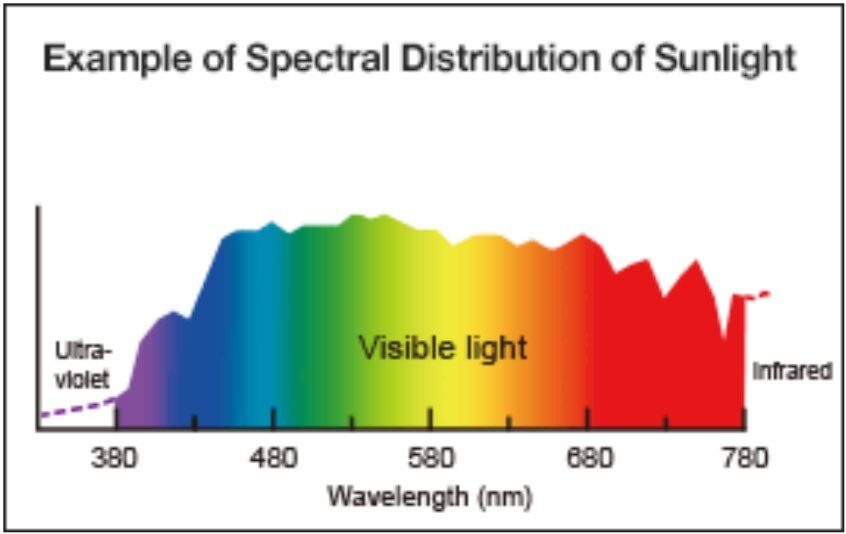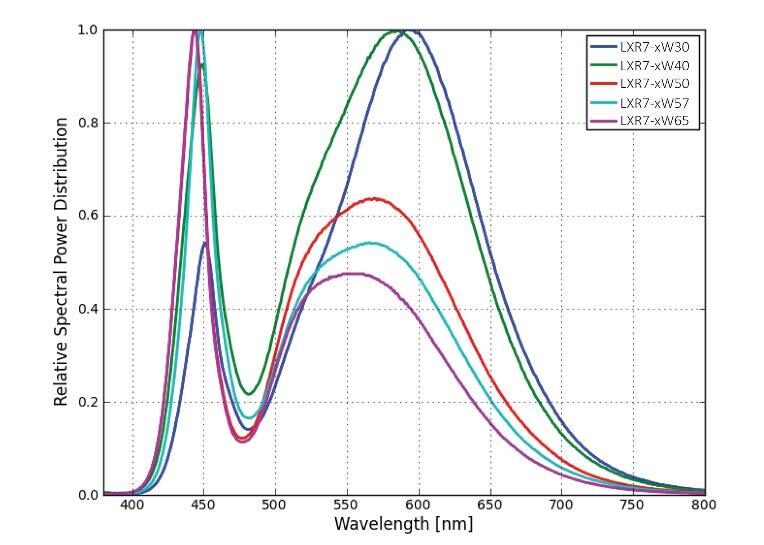COMPARISON OF BLUE LIGHT CONTENT IN LED LUMINAIRES VERSUS MOONLIGHT AND SUMLIGHT
Residents and the general public are noticing the change in lighting technology as we move from orange sodium-based lighting to white LED lights. The public has raised questions about the relative safety of this technology particularly due to uncontrolled information on the web which is not scientifically rigorous in its approach. This summary provides some clarity based on the scientific data for the safety of LED Luminaires.
SUNLIGHT
Figure 1 below shows the spectral distribution for sunlight. White light we see is made up of a mixture of light wavelength across the rainbow. It also includes spectra outside the visible spectrum including both infra-red (heat) and ultraviolet light which is responsible for tanning skin and when exposed for too long, to an increased risk of cancer.
The mixing of the red, green and blue light creates the impression of white light in the eye.
It is also worth noting that the colour temperature of sunlight (indicating how blue it is) is close to 6500 Kelvin. Note that the higher the colour temperature the bluer the light is and the lower the colour temperature the redder the light is.
Figure 1 Sunlight – Spectral Distribution
MOONLIGHT
Figure 2 shows the spectral distribution for moonlight. This is the baseline distribution for human vision at night. This light has been reflected off the moon back to the earth and so there is some absorption of wavelengths in the ultraviolet spectrum, below 380nm, resulting in significantly less of the light that can lead to damage.
It is also clear that the spectrum needs to consist of similar amounts of red, green and blue light to make the white moonlight.
The colour temperature of Moonlight is 4500K meaning it is less blue than sunlight reflecting the absorption of light in this wavelength by the surface of the moon.
Figure 2 Moonlight – Spectral Distribution
LED LIGHT
Figure 3 shows the spectral distribution of the LED light involved in the project at Dover. As you can see the peak of the blue light (on the green curve representing our LED) is level with the peak around the red wavelengths of 590nm.
As you can see, the spectral distribution cuts out all of the UV spectrum and the LEDs have less blue light than moonlight because we have reduced the blue light content between 400 and 425nm and between 460 and 525nm. By doing so we are significantly reduced the amount of blue light relative to both moonlight and sunlight, however, the mixing of the red, green and blue wavelengths are sufficient to still create a good quality white light.
Figure 3 – LED Light – Spectral Distribution
ULTRAVIOLET LIGHT
Although very few people would argue that exposure to visible spectrum (red through to blue) light is damaging to our health, we know that too much exposure to ultraviolet light does carry a health risk. Let’s look at the cause of the risk from ultraviolet light.
Ultraviolet light is split into three bands, UVA, UVB and UVC.
UVC is furthest from blue light on the electromagnetic spectrum and is the most harmful meaning high energy, light. Fortunately, UVC is completely absorbed by our atmosphere and doesn’t reach our skin to cause us any harm.
UVA light has enough energy to contribute to skin ageing but is not high enough energy to cause skin burning that is caused by the higher energy UVB wavelengths.
On a scale of potential harm, UVB is a moderate risk, UVA is a low risk. Blue light from the sun has a very low risk of causing any damage to health and is not recognised as an important factor in causing skin cancer.
However, all UV light has been removed from the LED light spectrum and so we can deduce that the impact on health from the LED light spectrum is consequently very low for equivalent light levels. This raises our final consideration: how do the light levels from LED lighting compare to sunlight and moonlight levels.
LIGHT LEVELS
It is difficult to say absolutely what quantity of blue light could affect our health as the impacts are very small meaning very high levels of blue light exposure would be required. It's probably easier to look at the relative levels of light to illustrate the relative impacts of sunlight, moonlight and LED light to give us a feel for the exposure levels versus a common-sense position on safe exposure levels.
From the above figures and discussion, it’s clear that all white light we are considering includes a mix of red, green and blue light. We can also see that the proportion of blue light in the LED is much lower than both sunlight and moonlight and that there is none of the more harmful ultraviolet light in the LED light meaning that this is less harmful than sunlight or moonlight at the same light level.
So the question is how much blue light are we exposed to from LED luminaires?
A good measure is to look at how much light (illuminance) we measure as hitting the ground from the three sources. The measure of illuminance is expressed in lux which is a linear scale:
Source Light level Conditions
Moonlight < 1 lux on the ground on a clear night.
LED light 5 lux on the ground on a clear night at the edge of a lit area.
Sunlight 110,000 lux on the ground on a clear day.
It is clear that the light levels that we are exposed to as a result of moonlight are very low, which is intuitively correct. However, the light levels we are exposed to from LED lighting is not significantly higher, being 5 times higher than moonlight at the edges of a lit area. By contrast, the exposure levels from sunlight are 22,000 times higher than from LED luminaires.
Given the ultraviolet light has been eliminated from LED lighting we can deduce that the actual health risks from LED light are even lower this comparison would indicate.
DISTANCE FROM THE LED LIGHT SOURCE
The light level reduces with distance from the LED luminaire by a ratio of the distance squared. For a scheme that is typically lit to 100m from the lighting column or mast, we can show that the light levels for a person who stood 150m relative to 100m from the light source are 2.25 times lower. This means the levels at 500m from the lighting mast are half a million times lower or 0.000 002 times the levels in sunlight.
SIMILAR WHITE LIGHT SOURCES
The final evidence is the effects of long term use of other white light sources, such as mercury vapour lamps which were introduced in the early 1900s. There have been no health concerns raised with the long term use of these products despite these lamps having a more blue light content and some ultraviolet light. The evidence suggests that LED luminaires would have relatively less impact on health than these other white light sources due to reduced blue and ultraviolet levels indicating that there is no measurable risk to human health over the long term.
CONCLUSION
Lighting technology improvements show that LED lighting is both safe and effective having significant safety benefits to those working in the lit area when compared to sodium-based light sources.
Similar white light technology (using mercury vapour light) was first introduced in Europe in the early 1900s and no adverse health effects have been recorded from this technology despite the levels of UV being significantly higher than from LED lights we use today.
The refined wavelengths of light from LED luminaires compared with sunlight make LED sources far safer than sunlight. The light levels that we are exposed to at the edge of a lit area are at least 22,000 times less than those we experience from sunlight.
The impact of distance from a lighting installation further reduces the impact. At only 50m distance from the edge of a lit area are less than half those at the edge of the lit area, and at by 500m away from the LED light, the light levels produced are around 500,000 times less than produced by sunlight.
CU Phosco Lighting is a responsible company with high standards of social and environmental responsibility and we only offer products onto the market that are of the highest quality and design. We make every effort to ensure that our products are completely safe both for our customers, there staff and the general public.



